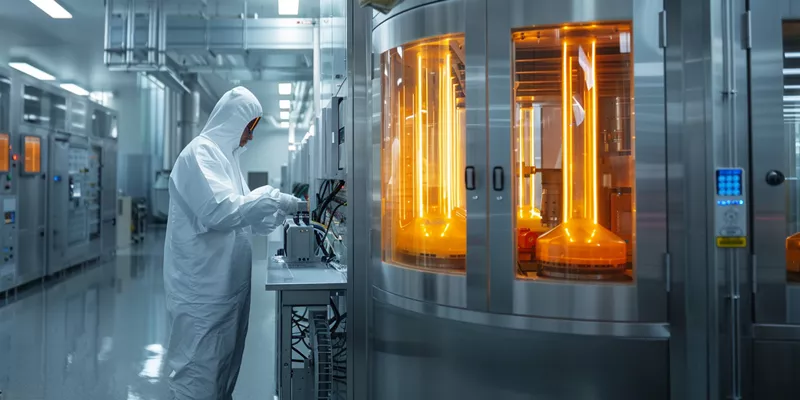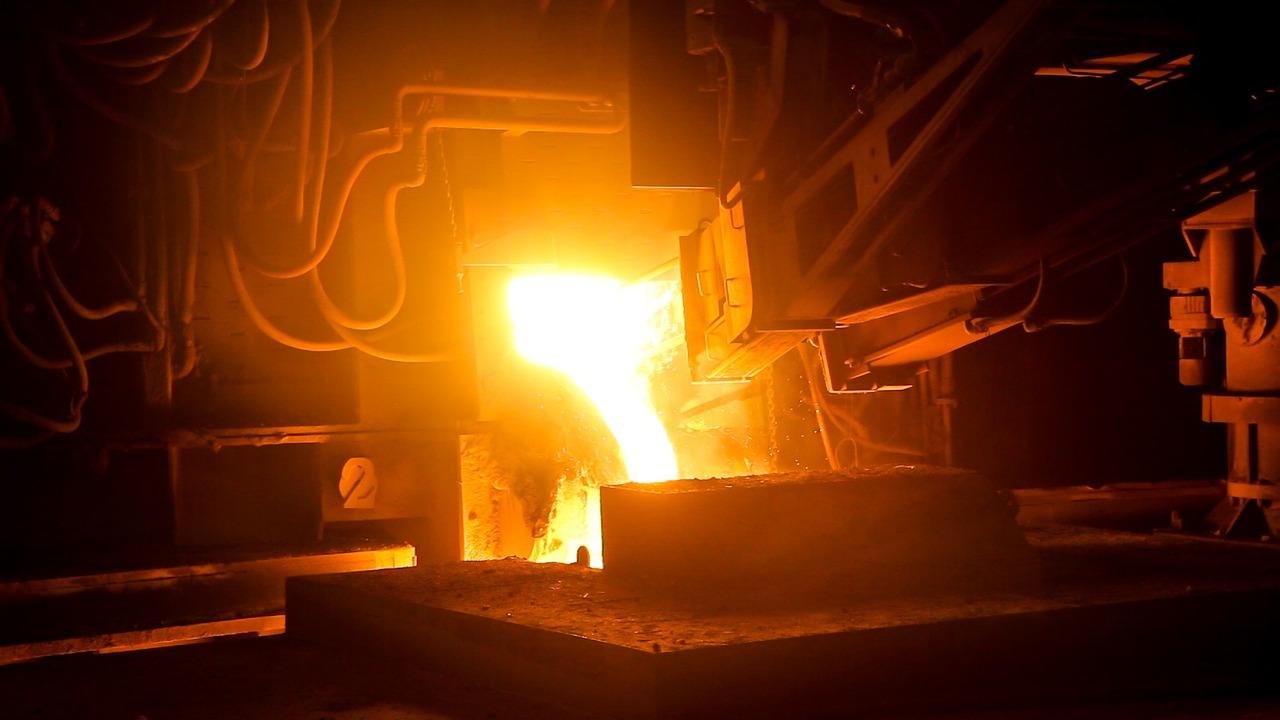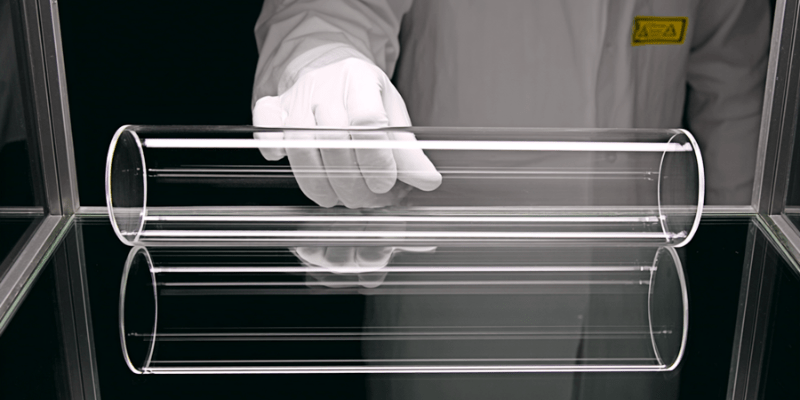Choosing the right quartz tube is essential for reliable and contamination-free laboratory experiments.
Laboratory quartz tubes must be matched to thermal, chemical, and optical requirements, and proper maintenance is critical for longevity and accuracy.

This guide provides a step-by-step framework for selecting, using, and maintaining quartz tubes in laboratory environments, ensuring optimal performance and safety.
Understanding Laboratory Quartz Tubes: Types and Core Functions
Quartz tubes for laboratory use are available in several types, including clear fused quartz, synthetic quartz, and opaque quartz. Each type offers unique advantages for specific experimental needs.
Clear fused quartz tubes are valued for their high purity and transparency, making them ideal for high-temperature and optical applications. Synthetic quartz provides superior UV transmission and is often used in sterilization and photochemical experiments.
Material composition and purity standards are critical. Laboratory-grade quartz tubes typically require ≥99.995% SiO₂ content and minimal metallic impurities to prevent contamination in sensitive experiments.
Types of Quartz Tubes for Lab Use (Clear Fused/Synthetic/Opaque)
Clear fused quartz tubes are made from natural or synthetic silica and offer excellent thermal and optical properties. Synthetic quartz tubes are produced from high-purity precursors and are preferred for UV-sensitive applications. Opaque quartz tubes, containing micro-bubbles or inclusions, are used where light transmission is not required but thermal insulation is important.
Critical Roles in High-Temperature Experiments
Quartz tubes are used as reaction vessels, furnace liners, and sample holders in high-temperature experiments. Their ability to withstand rapid heating and cooling cycles makes them indispensable for thermal analysis1 and material synthesis.
Material Composition and Purity Standards
High-purity quartz tubes minimize the risk of trace metal contamination. Purity is verified using techniques such as ICP-OES or GDMS. Meeting strict purity standards is essential for reproducibility and compliance with laboratory protocols.
Key Performance Properties for Laboratory Applications
Performance properties determine the suitability of quartz tubes for specific laboratory tasks. Engineers and researchers must evaluate thermal, chemical, and optical characteristics.
Selecting the right tube ensures safety, accuracy, and long service life in demanding experimental setups.

Thermal Resistance and Maximum Working Temperatures
Laboratory quartz tubes can withstand continuous temperatures of 1,050–1,200°C and short-term exposure up to 1,600°C. Their low thermal expansion coefficient (0.5 × 10⁻⁶/K) prevents cracking during rapid temperature changes. This makes them ideal for processes involving frequent heating and cooling.
Chemical Inertness Against Acids and Solvents
Quartz tubes are resistant to most acids and solvents, except hydrofluoric acid and strong alkalis. This chemical inertness protects samples and equipment from contamination. High-purity tubes are essential for experiments involving trace analysis or sensitive reactions.
Optical Transmission Ranges for Different Wavelengths
Clear and synthetic quartz tubes transmit more than 90% of UV and visible light, supporting spectroscopic and photochemical applications. Opaque quartz is used where light transmission is not needed. Engineers should match the tube’s optical properties to the experimental requirements.
Matching Quartz Tube Types to Specific Laboratory Experiments
Different laboratory experiments require specific quartz tube types and specifications. Matching the right tube to the experiment ensures optimal results and safety.
Consider the process environment, chemical exposure, and measurement needs when selecting a tube.
CVD Processes: Requirements for Clear Fused Quartz
Chemical vapor deposition (CVD)2 processes demand clear fused quartz tubes for their high purity and thermal stability. These tubes prevent contamination of substrates and withstand rapid temperature cycling. Engineers should specify tight dimensional tolerances and surface finish for uniform gas flow.
UV Sterilization: Synthetic Quartz Specifications
UV sterilization experiments require synthetic quartz tubes with high UV transmission. These UV quartz tubes allow maximum energy delivery for effective disinfection. Material selection should be based on verified UV transparency and resistance to photodegradation.
High-Purity Chemistry: Opaque Quartz Selection Criteria
Opaque quartz tubes are used in high-purity chemical synthesis where light exposure must be minimized. Their insulating properties help maintain stable reaction temperatures. Purity and chemical compatibility are critical for preventing unwanted side reactions.
Quartz vs. Borosilicate Glass Tubes: Critical Performance Differences
Quartz and borosilicate glass tubes differ significantly in thermal, chemical, and cost performance. Understanding these differences helps engineers make informed choices for laboratory applications.
Quartz tubes are preferred for high-temperature, high-purity, and optical-critical experiments, while borosilicate glass may suffice for less demanding tasks.
Thermal Shock Resistance Comparison (1000°C/min vs 200°C/min)
Quartz tubes can withstand thermal shocks up to 1000°C/min, making them suitable for rapid heating and cooling. Borosilicate glass tubes typically fail at rates above 200°C/min. This difference is crucial for experiments involving frequent temperature changes.
Chemical Durability in Acidic Environments
Quartz tubes are highly resistant to acids and solvents, except hydrofluoric acid. Borosilicate glass3 is more susceptible to corrosion and leaching, especially in acidic conditions. For trace analysis and sensitive reactions, quartz is the safer choice.
Cost-Benefit Analysis for Long-Term Use
While quartz tubes have a higher upfront cost, their durability and lower contamination risk reduce long-term expenses. Borosilicate glass may be cheaper initially but requires more frequent replacement. Engineers should consider total cost of ownership when making procurement decisions.
Expert Insight:
A common mistake is using the same cleaning agent for all quartz tubes. Tests show that hydrofluoric acid corrodes synthetic quartz tubes (weight loss >3%/h), while fused quartz is more resistant. Always verify the tube material with UV light before cleaning, and use only neutral pH solutions for synthetic quartz.
Proper Handling and Installation Protocols for Lab Equipment
Correct handling and installation are essential for maximizing the lifespan and performance of laboratory quartz tubes.
Following best practices reduces the risk of breakage, leaks, and measurement errors.
Safe Mounting Procedures for Tube Furnaces
Mount quartz tubes with supports that allow for thermal expansion. Avoid overtightening clamps or brackets, which can induce stress and cause cracking. Use soft gaskets or sleeves to cushion contact points.
Thermal Cycling Best Practices
Gradually ramp up and cool down temperatures to minimize thermal shock. Avoid exposing tubes to direct flame or sudden temperature changes. Monitor temperature profiles and adjust heating rates as needed.
Leak Testing Methods for Sealed Systems
After installation, perform leak tests using pressure decay or vacuum methods. Inspect all seals and joints for integrity. Regular testing ensures safe operation and prevents contamination of samples.
Step-by-Step Cleaning and Maintenance Guide
Proper cleaning and maintenance are vital for ensuring the accuracy and longevity of laboratory quartz tubes.
Follow a structured protocol to remove contaminants and prevent damage.
Routine Cleaning: Acid Baths for Fused Quartz
For routine cleaning, soak fused quartz tubes in a dilute acid bath (e.g., nitric acid) to remove surface residues. Rinse thoroughly with deionized water. Dry tubes in a clean, dust-free environment.
Contamination Removal: Piranha Solution Ratios
For stubborn organic contamination, use a piranha solution (3:1 sulfuric acid to hydrogen peroxide). Handle with extreme caution and only in a fume hood. Rinse and neutralize thoroughly after treatment.
Crack Inspection and Failure Prevention
Inspect tubes regularly for cracks or chips using visual and UV light methods. Replace any damaged tubes immediately to prevent catastrophic failure. Document maintenance and inspection results for traceability.
Evaluating Suppliers for Laboratory-Grade Quartz Tubes
Choosing the right supplier is as important as selecting the right tube. Reliable suppliers ensure consistent quality and support.
Evaluate suppliers based on certification, traceability, and customization capabilities.
Certification Requirements (ISO 9001/13485)
Suppliers should hold ISO 9001 or ISO 13485 certification for quality management. Certification ensures adherence to international standards and consistent product quality.
Material Traceability Documentation
Request full traceability documentation for each batch of quartz tubes. This includes raw material sources, production records, and test reports. Traceability supports compliance and troubleshooting.
Customization Capability Assessment
Assess the supplier’s ability to provide custom dimensions, surface finishes, and special features. Customization is often required for unique laboratory setups. Confirm lead times and feasibility before placing orders.
Cost Factors and Lifespan Optimization Strategies
Managing costs and maximizing tube lifespan are key concerns for laboratory managers and engineers.
Consider both direct and indirect expenses when budgeting for quartz tubes.
Price Drivers: Diameter Tolerance vs Cost
Tighter diameter tolerances increase manufacturing complexity and cost. Balance precision requirements with budget constraints. Standard sizes are more economical and readily available.
Extending Service Life Through Proper Annealing
Proper annealing relieves internal stresses and extends tube lifespan. Request annealed tubes for high-temperature or cycling applications. Follow recommended heating and cooling protocols during use.
Cost-Benefit of Premium vs Standard Grades
Premium-grade quartz tubes offer higher purity and better performance but come at a higher price. Standard grades may suffice for less critical applications. Evaluate total cost of ownership, including replacement frequency and downtime.
Conclusion
Selecting and maintaining the right quartz tube is essential for laboratory accuracy, safety, and cost control.
Choosing the right lab quartz tube is a strategic decision. Leverage TOQUARTZ’s direct factory supply, engineering support, and rapid delivery to ensure your experiments achieve reliable, reproducible results—contact us for expert consultation and custom solutions.
FAQ (Frequently Asked Questions)
What is the maximum temperature a lab quartz tube can withstand?
Most laboratory quartz tubes can operate continuously at 1,050–1,200°C, with short-term exposure up to 1,600°C.
How do I clean quartz tubes without damaging them?
Use acid baths for fused quartz and only neutral pH solutions for synthetic quartz. Avoid hydrofluoric acid unless the tube is verified as fused quartz.
What certifications should I look for when sourcing lab quartz tubes?
Look for ISO 9001 or ISO 13485 certification, and request full material traceability documentation from your supplier.
How does quartz compare to borosilicate glass for laboratory use?
Quartz offers superior thermal shock resistance, chemical inertness, and optical clarity, making it preferable for demanding laboratory applications.
References:
Explore this link to understand the significance of thermal analysis in various scientific fields. ↩
Learn how chemical vapor deposition (CVD) works, its industrial applications, and why it's essential for producing high-purity materials like fused quartz tubes. ↩
Explore this link to understand the unique properties and applications of Borosilicate glass in various industries. ↩





